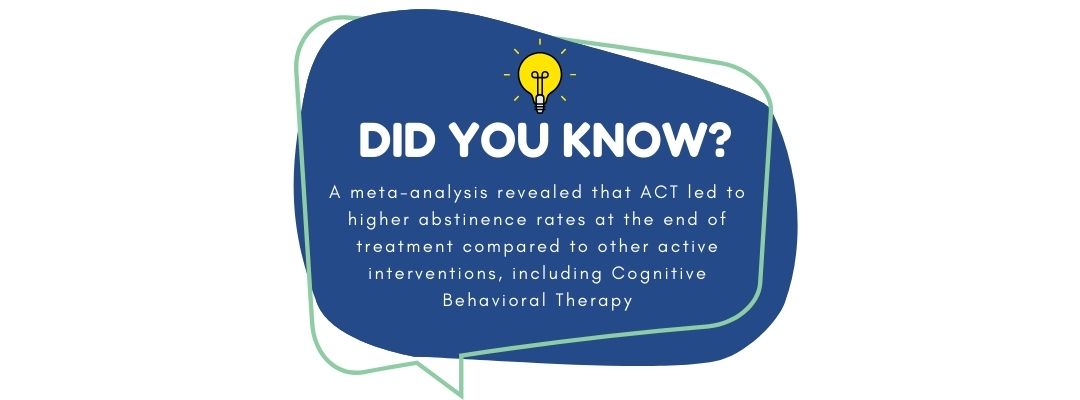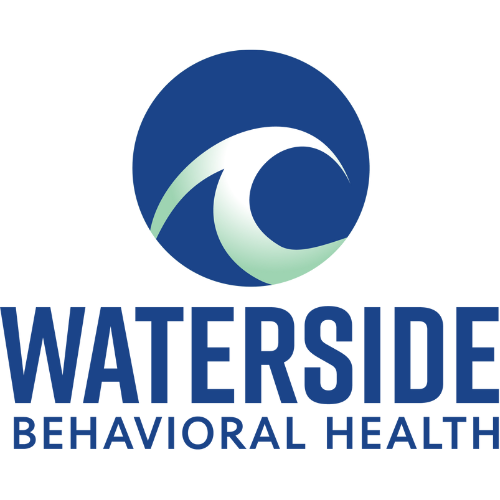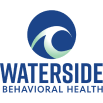Acceptance and Commitment Therapy: A Practical Guide to Managing Psychological Distress
Acceptance and Commitment Therapy (ACT) offers a unique approach to mental health that focuses on psychological flexibility. Rather than eliminating difficult feelings, ACT teaches people to accept them while committing to behavior change that enriches life. This evidence-based therapy has shown effectiveness for anxiety, depression, and chronic pain.
By embracing painful thoughts and feelings rather than fighting them, individuals can reduce their suffering and move toward what truly matters to them. The six core processes of ACT—acceptance, cognitive defusion, being present, self as context, values, and committed action—work together to help people live more meaningful lives.
ACT differs from traditional cognitive behavioral therapy by not trying to change negative thoughts. Instead, it helps people change their relationship with difficult thoughts and feelings, creating space to pursue valued activities even when uncomfortable emotions arise.
Foundations of Acceptance and Commitment Therapy
Acceptance and Commitment Therapy (ACT) was built on solid psychological research and principles that focus on mindfulness, acceptance, and values-based action. It offers a unique approach to mental health that differs from traditional cognitive therapies.
Historical Context
ACT emerged in the late 1980s, developed by Steven C. Hayes and his colleagues. It evolved from Relational Frame Theory (RFT), a psychological theory about human language and cognition.
Initially, ACT faced skepticism from the traditional cognitive-behavioral therapy community. Many therapists were focused on changing thought content rather than changing one’s relationship to thoughts.
By the early 2000s, ACT gained significant traction as research demonstrated its effectiveness. The therapy developed alongside the “third wave” of behavioral therapies, which include Dialectical Behavior Therapy and Mindfulness-Based Cognitive Therapy.
Today, ACT has established itself as an evidence-based approach with applications beyond mental health, including chronic pain management, workplace performance, and education.
Core Principles
ACT is built around six core processes that together create psychological flexibility:
- Acceptance – Embracing thoughts and feelings without trying to change them
- Cognitive Defusion – Learning to step back from thoughts rather than being caught up in them
- Present Moment Awareness – Paying attention to the here and now
- Self-as-Context – Viewing oneself as the observer of experiences, not just the experiences themselves
- Values – Identifying what truly matters in one’s life
- Committed Action – Taking steps aligned with personal values
These principles work together rather than in isolation. The goal isn’t happiness but rather living a rich, meaningful life despite inevitable pain.
Theoretical Framework
ACT’s foundation rests on functional contextualism, a philosophy of science that examines behaviors in their context rather than in isolation. This perspective sees psychological events as ongoing interactions between individuals and their environment.
The therapy is deeply informed by Relational Frame Theory, which explains how human language creates both suffering and the potential for meaningful change.
Unlike traditional cognitive approaches that try to eliminate “negative” thoughts, ACT focuses on changing the function of these experiences. This is done by altering one’s relationship to thoughts rather than their content or frequency.
Research shows the ACT model applies across cultures and diverse populations. Its effectiveness doesn’t rely on eliminating symptoms but on helping people move toward valued living despite challenges.

Applications and Techniques
Acceptance and Commitment Therapy (ACT) offers practical approaches to help people live more fulfilling lives aligned with their values. The methods focus on developing psychological flexibility through mindfulness, acceptance, and commitment to behavioral change.
Assessment and Formulation
ACT practitioners begin by assessing psychological flexibility across six core processes. They look for patterns of experiential avoidance, cognitive fusion, and disconnection from values.
The therapist works collaboratively with clients to create a formulation that identifies how psychological inflexibility manifests in their lives. This might involve examining how avoidance strategies have developed over time.
Standardized measures like the Acceptance and Action Questionnaire (AAQ-II) help track progress. These tools measure psychological flexibility and identify areas for intervention.
Therapists also observe in-session behaviors that demonstrate fusion with thoughts or avoidance of emotions. This real-time information guides treatment planning and helps establish therapeutic goals.
Key Processes and Exercises
ACT employs specific exercises to target each of the six core processes:
- Acceptance exercises – Teaching clients to make room for difficult feelings rather than fighting them. The “passengers on the bus” metaphor illustrates how we can acknowledge uncomfortable thoughts without letting them drive our behavior.
- Cognitive defusion techniques – Methods to create distance from thoughts, such as repeating a negative thought until it loses meaning or saying “I’m having the thought that…” before difficult cognitions.
- Present moment awareness – Mindfulness practices that bring attention to the here and now, like focused breathing or body scan exercises.
- Self-as-context work – Activities that help differentiate the observing self from temporary thoughts and feelings, such as the “chessboard metaphor.”
- Values clarification – Exercises to identify what truly matters, including values card sorts or imagining what you’d want said at your funeral.
- Committed action planning – Setting specific, measurable goals aligned with identified values.
Adapting ACT for Different Populations
ACT has been successfully modified for various groups and settings. For children and adolescents, therapists use age-appropriate metaphors and more interactive, playful activities.
In group settings, ACT focuses on shared exercises and normalizing difficult experiences. Participants benefit from witnessing others practice acceptance and commitment skills.
For chronic pain management, ACT emphasizes living meaningfully despite persistent pain rather than fighting to eliminate it. Research shows this approach often reduces pain-related disability.
Digital adaptations of ACT deliver interventions through apps and online programs. These formats increase accessibility and allow for practice between formal sessions.
Cultural adaptations ensure ACT respects diverse values and contexts. Therapists modify metaphors and examples to be culturally relevant while maintaining core therapeutic processes.
Research and Outcomes
The scientific evidence supporting Acceptance and Commitment Therapy (ACT) has grown substantially over the past two decades. Studies show promising results across various psychological conditions and populations.
Efficacy Studies
Research demonstrates ACT’s effectiveness for multiple conditions. In randomized controlled trials, ACT has shown positive outcomes for anxiety disorders, with improvements in symptom reduction and quality of life measures.
For chronic pain management, studies indicate ACT helps patients reduce pain-related disability while increasing psychological flexibility. Patients report better functioning despite ongoing pain sensations.
Depression research shows ACT performs comparably to cognitive behavioral therapy (CBT), with some studies suggesting longer-lasting effects at follow-up assessments.
Studies examining workplace stress reveal ACT interventions reduce burnout and increase psychological well-being among employees. Organizations implementing ACT report decreased absenteeism.
Meta-Analyses and Systematic Reviews
A 2015 meta-analysis examining 39 studies found moderate to large effect sizes for ACT across various conditions compared to waitlist controls. The average effect size was 0.57, considered clinically significant.
When compared directly to CBT, meta-analyses show ACT performs similarly for most conditions, with some suggesting ACT may have advantages for treatment-resistant cases.
A systematic review of 60 randomized controlled trials confirmed ACT’s effectiveness for chronic pain, depression, and anxiety disorders. This review highlighted ACT’s consistent impact on psychological flexibility as a key mechanism of change.
Long-term follow-up data suggests ACT produces durable results, with benefits often maintained 12-18 months post-treatment.
Frequently Asked Questions
Many people have common questions about Acceptance and Commitment Therapy (ACT) ranging from practical exercises to finding qualified practitioners and understanding how it differs from other therapeutic approaches.
What types of exercises are commonly used in Acceptance and Commitment Therapy?
ACT practitioners use mindfulness exercises to help clients observe thoughts without judgment. These often include guided meditations where clients notice thoughts as they arise.
Cognitive defusion techniques help people separate themselves from unhelpful thoughts. An example is the “Leaves on a Stream” exercise where clients visualize placing thoughts on leaves floating down a stream.
Values clarification activities help clients identify what truly matters to them. This might involve writing exercises or guided reflections about important life domains.
Commitment exercises encourage taking action aligned with personal values. These include setting SMART goals and creating specific behavioral plans.
How can I find a qualified Acceptance and Commitment Therapy practitioner in my area?
The Association for Contextual Behavioral Science (ACBS) maintains a directory of ACT therapists worldwide. Their website allows searching by location and specialization.
Many therapists list ACT as a specialty on psychology directories like Psychology Today or GoodTherapy. Filtering search results for ACT training can help narrow options.
When considering a therapist, ask about their specific training and experience with ACT. Qualified practitioners should have completed formal ACT workshops or certification programs.
What resources are available for learning more about Acceptance and Commitment Therapy?
The ACBS website offers extensive resources including articles, research papers, and training materials. Many resources are available to non-members.
Online courses through platforms like Coursera and edX sometimes feature ACT training modules. These can provide structured learning opportunities for beginners.
ACT workshops and conferences occur regularly around the world. These events offer hands-on learning experiences and networking with practitioners.
Podcasts like “ACT in Context” and “The Psychologists off the Clock” feature discussions about ACT principles and applications.
How do Acceptance and Commitment Therapy interventions help with psychological flexibility?
ACT interventions target six core processes that build psychological flexibility. These include acceptance, cognitive defusion, being present, self-as-context, values, and committed action.
The hexaflex model illustrates how these processes work together. When clients practice these skills, they develop the ability to adapt to changing circumstances while staying aligned with personal values.
Mindfulness practices help clients develop present-moment awareness. This reduces automatic reactivity to difficult thoughts and feelings.
Values work gives direction and meaning to behavior change. Rather than just reducing symptoms, ACT helps clients move toward what matters most to them.
In what ways does Acceptance and Commitment Therapy differ from Cognitive Behavioral Therapy?
CBT focuses on changing thought content, while ACT emphasizes changing one’s relationship with thoughts. ACT doesn’t try to reduce negative thoughts but teaches acceptance of them.
The goal of ACT isn’t symptom reduction but increased value-consistent living. CBT more directly targets symptom reduction as a primary outcome.
ACT incorporates mindfulness as a central component rather than an optional add-on. This reflects its roots in both behavioral science and contemplative traditions.
The therapeutic relationship in ACT often involves more self-disclosure and shared humanity. Therapists frequently practice the same skills they teach clients.
Can you recommend some reputable books for deeper understanding of Acceptance and Commitment Therapy?
“Get Out of Your Mind and Into Your Life” by Steven Hayes provides an accessible self-help introduction to ACT principles. It includes many practical exercises.
“The Happiness Trap” by Russ Harris explains ACT concepts in straightforward language. It’s particularly helpful for beginners new to mindfulness and acceptance approaches.
“ACT Made Simple” by Russ Harris is designed for practitioners but remains readable for motivated laypeople. It breaks down therapeutic techniques step by step.
“Learning ACT” by Jason Luoma, Steven Hayes, and Robyn Walser offers a comprehensive guide for clinicians. It includes detailed session transcripts and implementation strategies.
Is ACT Therapy useful for substance use disorder?
Yes, ACT is effective for Substance Use Disorder (SUD) by helping individuals manage cravings, reduce relapse risk, and build healthier coping strategies.
It promotes acceptance of difficult emotions and encourages values-based actions, making it a valuable approach in addiction treatment.
By emphasizing values-based action, ACT helps individuals align their behaviors with their long-term goals, leading to more sustainable recovery.
It is commonly integrated into intensive outpatient programs (IOPs), residential treatment, and relapse prevention strategies.
You’re not alone, and help is always within reach. Contact us today at (774) 619-7750 and take control of your mental health.




